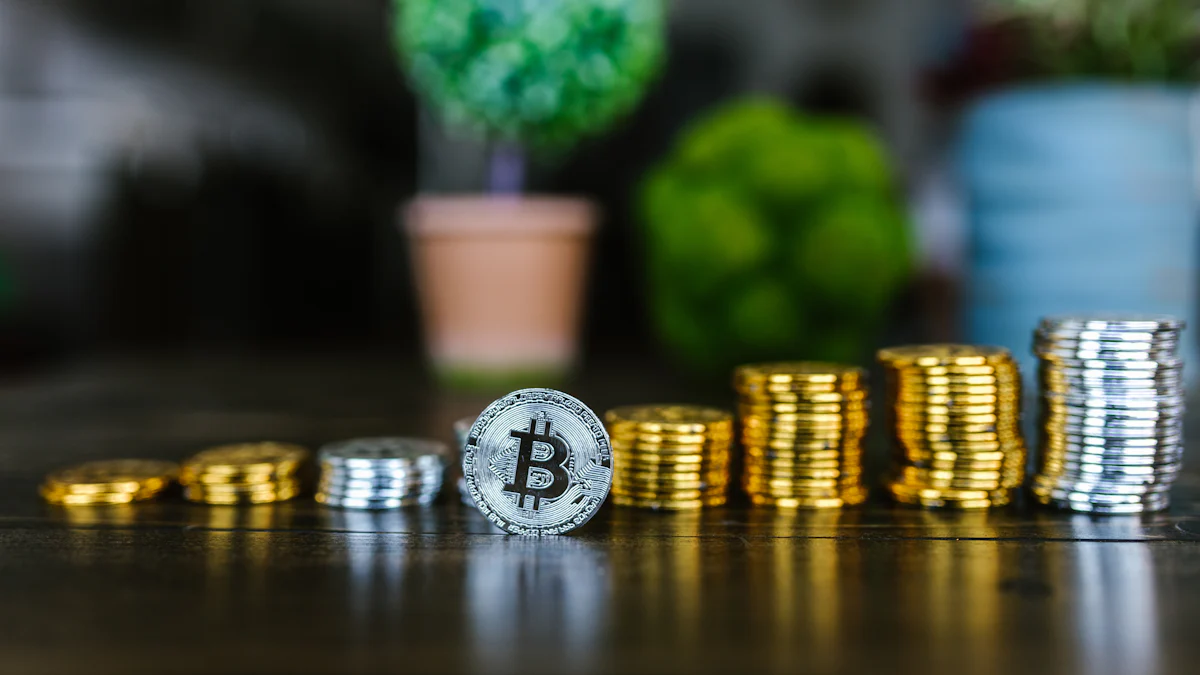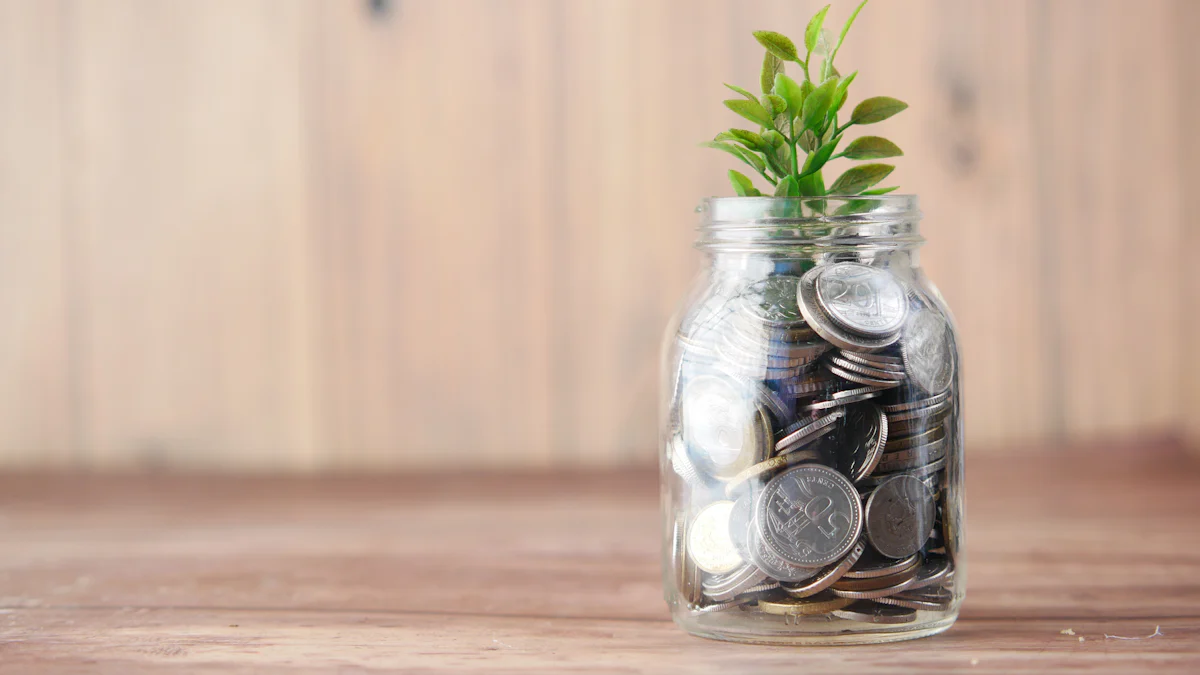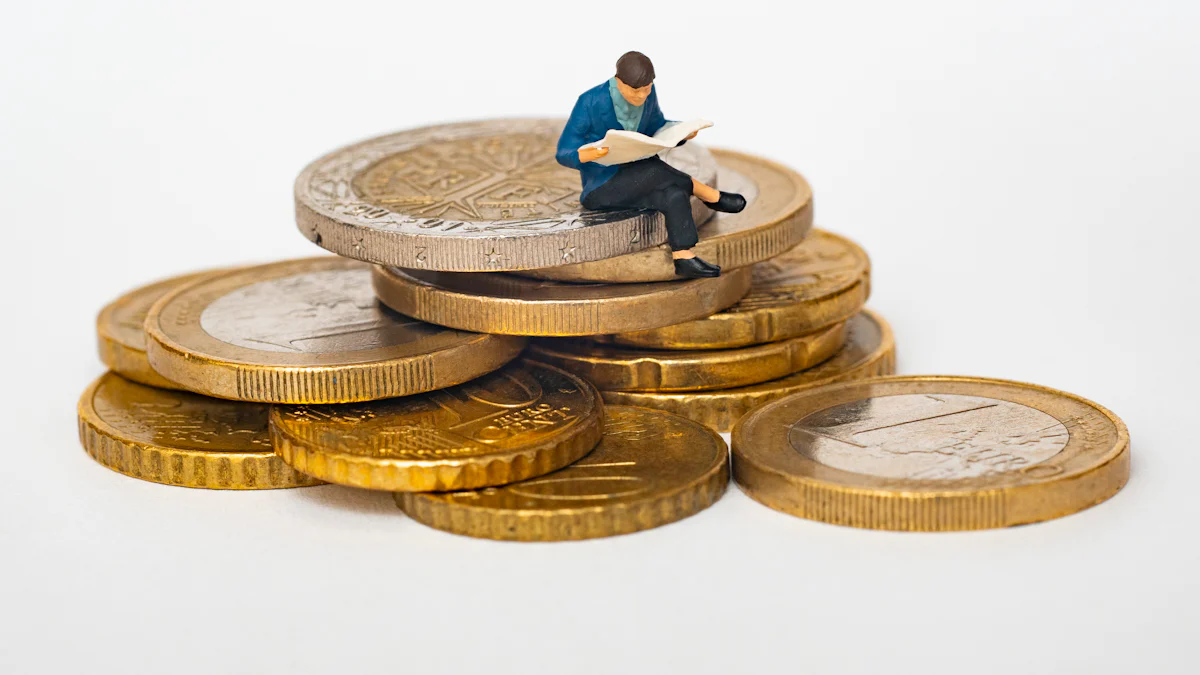How compound interest works?

Have you ever wondered how your money can grow while you’re doing nothing? That’s the magic of compound interest. It’s like planting a tree that not only grows taller but also sprouts new branches, each producing more fruit. In simple terms, compound interest is when the interest you earn starts earning its own interest. Over time, this creates a snowball effect, making your savings or investments grow faster.
Here’s why it’s so powerful: the longer you let your money sit, the more it grows. The key components include the principal (your starting amount), the interest rate, and how often the interest is added. With time on your side, compound interest can turn small contributions into significant financial growth.
Key Takeaways
Compound interest helps your money grow faster by earning interest on both your starting amount and the interest it earns.
Saving or investing early gives your money more time to grow, leading to much bigger returns over time.
Adding more money regularly can increase the benefits of compound interest, even if you start small.
Picking accounts with higher interest rates and frequent compounding can make your money grow faster.
Not taking money out of your investment lets compound interest work better, helping your savings grow steadily.
What is compound interest?

Definition and key concept
Compound interest is a way your money grows by earning interest not just on the original amount you invested (called the principal) but also on the interest that has already been added. Think of it as a snowball rolling downhill. As it rolls, it picks up more snow, growing bigger and faster. This is why compound interest is often called a "wealth-building machine."
Here’s the key idea: the longer you let your money grow, the more powerful compound interest becomes. It works best when you give it time to do its magic. Whether you’re saving for retirement or building an emergency fund, compound interest can help you reach your financial goals faster.
How it differs from simple interest
You might wonder how compound interest is different from simple interest. The difference lies in how the interest is calculated. With simple interest, you only earn interest on the original amount you invested. This means the interest stays the same every year. For example, if you invest $1,000 at a 5% simple interest rate, you’ll earn $50 each year, totaling $250 after five years.
Compound interest, on the other hand, calculates interest on both the principal and the interest that has already been added. This means your earnings grow over time. Using the same $1,000 at a 5% compound interest rate, you’d earn $50 in the first year, $52.50 in the second year, and so on. After five years, your total would be about $1,276.28—more than with simple interest. That’s the power of compounding!
Why it’s called "interest on interest"
Compound interest gets its nickname, "interest on interest," because it builds on itself. Here’s how it works: in the first year, you earn interest on your initial investment. In the second year, you earn interest on both the original amount and the interest from the first year. This cycle continues, creating a snowball effect.
For example, let’s say you invest $1,000 at a 5% annual compound interest rate. In the first year, you earn $50, bringing your total to $1,050. In the second year, you earn 5% on $1,050, which is $52.50. By the end of five years, your investment grows to $1,276.28. Compare this to $1,250 with simple interest, and you can see why compound interest is so powerful. It’s like your money is working overtime for you!
How does compound interest work?
Key components of compound interest
To understand how compounding works, you need to break it down into four key components. Each plays a crucial role in determining how much your money grows.
Principal
The principal is your starting amount, also known as the initial deposit. It’s the foundation of your investment. The larger your principal, the more interest you’ll earn. For example, if you start with $10,000 instead of $1,000, your returns will be significantly higher because the interest is calculated on a bigger base.
Interest rate
The interest rate determines how much your money grows annually. Higher rates mean faster growth. For instance, a 7% rate will grow your savings quicker than a 3% rate. Even a small difference in rates can have a big impact over time, so always aim for the best rate available.
Compounding frequency
How often your interest is added to your principal matters a lot. The more frequent the compounding, the faster your money grows. Here’s a quick comparison:
Annual compounding: Future Value = $1,200,000
Semiannual compounding: Future Value = $1,210,000
Quarterly compounding: Future Value = $1,215,506
Monthly compounding: Future Value = $1,219,391
Weekly compounding: Future Value = $1,220,934
Daily compounding: Future Value = $1,221,336
As you can see, daily compounding gives the highest returns because the interest is calculated more often.
Time
Time is the secret ingredient in the power of compound interest. The longer you leave your money invested, the more it grows. Even small amounts can turn into substantial sums if you give them enough time. Starting early is key to maximizing your returns.
The power of compound interest over time
The power of compound interest lies in its ability to grow your money exponentially. Let’s look at an example. If you invest $100,000 for 20 years at a 7% return, your investment will grow to about $385,000. But if you let it sit for 40 years, it skyrockets to $1.5 million! That’s the magic of compounding over time.
Real-life stories also highlight this power. Anne Scheiber, for instance, turned her savings into over $20 million by investing wisely and letting compound interest work for decades. Similarly, Benjamin Franklin’s investment plan grew to $6.9 million over 200 years. These examples show how compounding can create life-changing wealth.
Factors influencing compound interest growth
Several factors affect how much your money grows:
Interest Rates: Higher rates lead to greater returns.
Frequency of Compounding: More frequent compounding means faster growth.
Time: The longer your money stays invested, the more it compounds.
By understanding these factors, you can make smarter financial decisions and harness the full potential of compound interest.
How to calculate compound interest
The formula for compound interest
To calculate compound interest, you’ll need to use a specific formula. Don’t worry—it’s simpler than it looks once you break it down. Here’s the standard formula:
Variable | Description |
|---|---|
A | Future Value (the total amount after interest) |
P | Principal (your initial investment) |
r | Annual Interest Rate (as a decimal) |
n | Number of times interest is compounded yearly |
t | Time (in years) |
The formula is:A = P(1 + r/n)^(nt)
This formula helps you figure out how much your investment will grow over time. Each variable plays a role, so it’s important to know your starting amount, interest rate, and how often the interest compounds.
Step-by-step calculation guide
Let’s break it down step by step so you can calculate compound interest manually:
Understand the formula: Use
A = P(1 + r/n)^(nt).Gather your variables:
Principal (P): The amount you’re starting with.
Annual interest rate (r): Convert it to a decimal (e.g., 5% becomes 0.05).
Compounding frequency (n): How often interest is added (e.g., monthly = 12).
Time (t): The number of years you’ll leave the money invested.
Plug the values into the formula: Replace the variables with your numbers.
Solve step by step: Start with the parentheses, then handle the exponent, and finally multiply by the principal.
By following these steps, you can calculate how much your investment will grow.
Example calculation with numbers
Let’s see an example to make this clearer. Imagine you invest $10,000 at a 3% annual interest rate, compounded monthly, for 10 years. Here’s how you’d calculate it:
Variables:
P = $10,000
r = 0.03
n = 12
t = 10
Formula:
A = P(1 + r/n)^(nt)Plug in the values:
A = 10,000 × (1 + 0.03/12)^(12×10)Solve:
A = 10,000 × (1 + 0.0025)^120A = 10,000 × (1.0025)^120A = 10,000 × 1.34935A = 13,493.54
After 10 years, your investment grows to $13,493.54. That’s $3,493.54 in interest earned!
Tip: You can use online calculators or apps to save time and avoid manual errors.
Tools to calculate compound interest easily
Calculating compound interest manually can feel like solving a math puzzle. Luckily, you don’t have to do it all by yourself. There are plenty of online tools that make the process quick and hassle-free. These calculators not only save time but also help you visualize how your money grows over time. Here are some of the best ones you can try:
Investor.gov Compound Interest Calculator: This tool is perfect if you want to include monthly contributions in your calculations. It’s straightforward and user-friendly, making it ideal for beginners. You can see how even small, regular deposits can boost your savings.
TheCalculatorSite.com Compound Interest Calculator: If you’re dealing with different currencies or want to factor in inflation, this calculator has you covered. It’s versatile and gives you a clear picture of your investment’s future value.
Council for Economic Education Compound Interest Calculator: Designed with students in mind, this tool is great for learning. It shows your investment growth over time with easy-to-read graphs, making it both educational and fun to use.
Tip: Bookmark one of these calculators for quick access whenever you need to plan your savings or investments.
These tools are like having a financial assistant at your fingertips. You just enter your numbers, and they do the heavy lifting. Whether you’re saving for a vacation, a new car, or retirement, these calculators can help you stay on track. Give them a try and see how your money can grow with compound interest!
Benefits of compound interest

Accelerating wealth growth
Compound interest is like a financial superpower that helps your money grow faster than you might expect. It works by earning interest not just on your initial investment but also on the interest that accumulates over time. This creates a snowball effect, where your wealth grows exponentially.
Here’s why it’s so effective:
Even small investments can grow significantly over time.
Interest is earned on both the principal and the accumulated interest.
Unlike simple interest, which grows at a steady pace, compound interest accelerates your wealth by building on itself.
For example, if you invest $1,000 at a 5% annual compound interest rate, your money will grow to $1,276.28 in five years. That’s more than what you’d earn with simple interest. This exponential growth makes compound interest one of the most powerful tools for building wealth.
The power of starting early
When it comes to compound interest, time is your best friend. The earlier you start, the more time your money has to grow. Let’s look at an example. Alice starts investing $100 monthly at age 25 and ends up with around £260,000 by age 65. John, who starts at age 35 with the same monthly investment, only accumulates about £125,000. That’s a huge difference, all because Alice started ten years earlier.
Starting early also means you can make smaller, manageable contributions without feeling financial pressure. Over time, these contributions add up, giving you a solid financial cushion. Plus, the longer your money stays invested, the better it can weather market ups and downs.
Tip: Don’t wait for the “perfect time” to start saving. The sooner you begin, the more you’ll benefit from compound interest.
Long-term advantages for savings and investments
Compound interest isn’t just about growing your wealth—it’s also about securing your financial future. By reinvesting your earnings, you can build a robust fund for long-term goals like retirement or buying a home.
Here’s how it helps:
It turns your savings into a powerful tool for achieving financial independence.
It reduces the stress of relying solely on income for big expenses.
It encourages better financial habits, like consistent investing and avoiding unnecessary withdrawals.
Understanding compound interest also gives you a psychological edge. You’ll feel more confident about your financial decisions and less stressed about the future. With a clear plan and the power of compounding, you can achieve your goals more easily.
Remember: The key to long-term success is patience. Let your investments grow without interruptions, and you’ll see the rewards over time.
How to maximize the potential of compound interest
Start saving or investing early
If you want to unlock the full power of compound interest, start as early as possible. Time is your greatest ally when it comes to growing your money. The earlier you begin, the more time your investments have to compound and multiply.
Here’s why starting early makes such a big difference:
A 30-year-old who saves $1,000 at a 5% annual return will have over 60% more money by age 65 than someone who starts at 40.
If both save $1,000 every year, the 30-year-old nearly doubles their final amount compared to the 40-year-old.
Even small monthly contributions, like £100 starting at age 25, can grow to £260,000 by age 65. Waiting until 35 reduces that amount to just £125,000.
Tip: Don’t wait for the “perfect moment” to start saving. Even small amounts invested early can lead to huge rewards later.
Increase contributions regularly
Boosting your contributions over time is another smart way to maximize compound interest. You don’t need to start with a large amount. Instead, focus on consistency and gradually increase how much you save or invest.
For example, investing $1,000 annually for 30 years at an 8% return can grow to over $237,000. That’s the power of regular contributions! Here’s how you can make it work:
Stay consistent: Regular contributions help smooth out market ups and downs, giving your money more time to grow.
Use tax-advantaged accounts: Accounts like IRAs or 401(k)s let your earnings grow tax-deferred, which maximizes compounding.
Reevaluate your budget: As your income grows, increase your savings rate. Even small adjustments can make a big difference.
Pro Tip: Set up automatic transfers to your savings or investment account. This ensures you stay consistent without even thinking about it.
Choose accounts with higher interest rates
Not all accounts are created equal. Choosing one with a higher interest rate can significantly boost your returns. Even a small difference in rates can have a big impact over time.
For instance, a 3% interest rate will grow your money much faster than a 1% rate. Look for accounts that offer competitive rates, like high-yield savings accounts or certificates of deposit (CDs). If you’re investing, consider options with historically higher returns, like index funds or ETFs.
Note: Always compare rates and fees before opening an account. A higher rate won’t help if fees eat into your earnings.
By starting early, increasing contributions, and choosing the right accounts, you can make compound interest work harder for you. Take these steps today and watch your money grow!
Opt for more frequent compounding
Did you know that how often your interest compounds can make a big difference in your returns? The more frequently your interest compounds, the faster your money grows. This happens because each compounding period adds interest to your balance, which then earns even more interest in the next period.
For example, daily compounding beats monthly or annual compounding because it calculates interest more often. Even small differences in compounding frequency can lead to significant growth over time.
Here’s a quick look at some accounts that offer higher compounding frequencies:
Account Type | Compounding Frequency | Annual Percentage Yield (APY) |
|---|---|---|
Quontic Bank high-yield savings account | Daily | |
Discover money market account | Daily | 4.2% as of January 2024 |
Ally high-yield CD account | Daily | Varies by account type |
When choosing an account, look for one with daily compounding. It’s like giving your money a little boost every single day. High-yield savings accounts and money market accounts are great options to consider.
Tip: Always compare APYs when selecting an account. A higher APY combined with frequent compounding can maximize your returns.
Avoid withdrawals to let interest compound
Frequent withdrawals can disrupt the magic of compound interest. Every time you take money out, you reduce the principal amount. This means less money earns interest, slowing down your growth.
Imagine you invest $10,000 at a 5% annual interest rate. If you leave it untouched for 10 years, it grows to $16,288. But if you withdraw $1,000 every year, your balance drops to just $9,849. That’s a huge difference!
To make the most of compounding, keep your money invested. Treat your savings or investment account like a “do-not-touch” fund. This way, your interest can keep building on itself without interruptions.
Pro Tip: Set up a separate emergency fund. This keeps your investments intact while giving you access to cash when needed.
By avoiding withdrawals and opting for frequent compounding, you can supercharge your financial growth. Let your money work harder for you!
Compound interest is your secret weapon for building wealth. It grows your money by earning interest on both your initial investment and the interest it accumulates. The earlier you start and the more consistent you are, the bigger your financial snowball becomes.
Take Action: Start saving today, even if it’s a small amount. Choose high-interest accounts, contribute regularly, and let your money grow uninterrupted.
With patience and smart decisions, you can achieve financial freedom. Compound interest isn’t just math—it’s the key to a brighter, wealthier future. 🌟
See Also
Understanding The Effects Of Fed Rate Cuts On Savings
Essential Insights For Credit Card Users On 2025 Rates
Navigating The Trade-Off Between Risk And Return In Investing
Cultivating Financial Strength: Recovering And Growing Wealth
Key Daily Practices Of Highly Successful Financial Individuals

